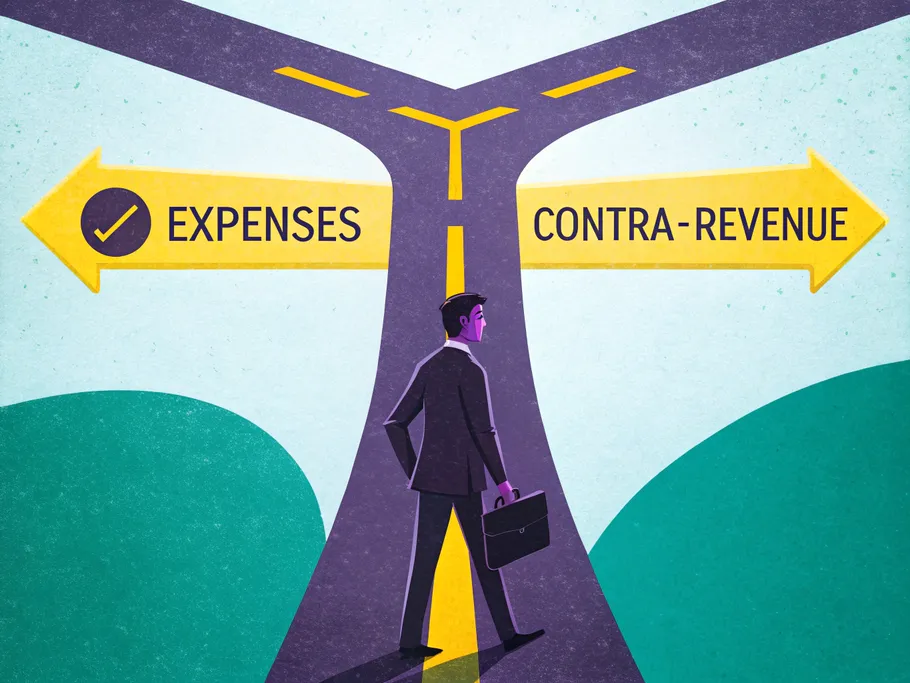Ah, discounts—the magic word that can turn a window shopper into a paying customer. But in the world of accounting, discounts aren’t just about making people happy; they’re about numbers, ledgers, and sometimes, a bit of head-scratching. So, is a sales discount an expense? Let’s unravel this accounting mystery together.

In the grand tapestry of business, two main types of discounts weave their way into financial statements: trade discounts and sales discounts. Trade discounts occur when sellers reduce the sales price for wholesale customers, especially on bulk orders. Think of it like getting a better deal when you buy a truckload of avocados instead of just one.
On the flip side, a sales discount (also known as a cash discount) happens when a seller offers a price reduction to encourage customers to pay their invoices early. It’s like saying, “Pay me quickly, and I’ll shave a few dollars off the total.” This little nudge helps businesses improve cash flow and reduce the risk of bad debts.
Now, here’s where the plot thickens. Sales discounts are recorded in a separate account from the sales revenue account. They appear on the income statement as a reduction of sales revenue, typically labeled as “Less: Sales Discounts”. For instance, if your business offered $500 in sales discounts during the accounting period, it would be reported as:
Less: Sales Discounts $500
But does this mean that sales discounts are expenses? After all, they reduce the amount you receive from customers. Well, not exactly. Sales discounts are considered contra-revenue accounts, not expenses. Intrigued? Stick around as we dive deeper into the world of sales discounts and uncover why they’re not quite the expense you might think they are.
Related: Is accumulated depreciation a fixed asset?
What Is a Sales Discount?
Let’s clear the fog and get to the heart of the matter: what is a sales discount in accounting? In simple terms, a sales discount—also known as a cash discount or early payment discount—is a reduction in the invoiced price of goods or services that a seller offers to a customer as an incentive for early payment. Think of it as a polite bribe: “Pay me sooner, and I’ll knock a bit off the price.”
These discounts are typically communicated in the terms of sale on the invoice. You’ll often see cryptic codes like “2/10 net 30”, which, contrary to looking like your Wi-Fi password, actually means something quite straightforward:
- 2/10: You get a 2% discount if you pay within 10 days of the invoice date.
- Net 30: The full invoice amount is due within 30 days if you don’t take the discount.
Sometimes, the terms cash discount and sales discount are used interchangeably. Both refer to the reduction in price offered for early payment, though some might argue that a cash discount is specifically for payments made in cash. In practice, they function the same way—incentivizing customers to pay promptly.
Businesses offer sales discounts to encourage timely payments, improve cash flow, and reduce the likelihood of bad debts. After all, money now is better than money later—or worse, no money at all. Plus, early payments support the company’s liquidity position and reduce outstanding accounts receivable. It’s like getting paid on payday instead of waiting weeks for your check to clear.
Example of a Sales Discount
Let’s bring this concept to life with an example of accounting for sales discounts. Suppose Company ABC sells $100 worth of goods to a customer on credit. They record the transaction as:
- Debit: Accounts Receivable $100
- Credit: Sales Revenue $100
Simple enough, right?
Now, Company ABC offers the customer a sales discount with terms of “2/10 net 30”. This means the customer can take a 2% discount if they pay within 10 days. If they pay after 10 days but before 30 days, they owe the full $100.
The customer, being financially savvy, pays within 10 days to take advantage of the discount. Here’s how Company ABC records the payment—this is the sales discount accounting entry for recording the transaction:
- Debit: Cash $98 (the amount received)
- Debit: Sales Discounts $2 (the discount amount)
- Credit: Accounts Receivable $100 (to clear the customer’s debt)
By offering the discount, Company ABC receives cash sooner, improving their cash flow. The $2 discount reduces their gross sales revenue, but the trade-off is that they have cash in hand and a satisfied customer. Not a bad deal!

Expense in Accounting
Before we answer the million-dollar question, “Is a sales discount an expense?“, let’s take a quick detour and talk about what an expense actually is in accounting.
An expense is a cost incurred in the process of generating revenue. It’s the money you spend to keep the lights on, the products flowing, and the coffee machine running. Examples of expenses include employee wages, payments to suppliers, rent, utilities, and depreciation of equipment. Essentially, expenses are the costs of doing business.
In the income statement, expenses are subtracted from revenues to determine the company’s net profit or loss. Here’s the basic formula:
Revenue - Expenses = Net Profit (or Loss)
Expenses are recorded on the debit side of the profit and loss report, while revenues are on the credit side. So, expenses directly reduce the net income of a business. They’re the necessary evils that, while reducing profits, are essential for generating revenue in the first place.
Related: Is the capital stock a debit or credit?
Is Sales Discount an Expense?
So, back to our original question: is a sales discount an expense? It might seem like it. After all, giving a discount reduces the amount of money you’re bringing in, which feels a lot like spending money. But in the accounting universe, things aren’t always what they seem.
In reality, a sales discount is not considered an expense. Instead, it’s recorded as a contra-revenue account. This brings us to the important distinction of contra revenue vs expense in accounting. Wait, a contra-what-now?
A contra-revenue account is an account that offsets revenue accounts, reducing the total amount of revenue reported. It has a debit balance, which is opposite to the normal credit balance of a revenue account.
So, when you offer a sales discount, you’re not incurring an expense—you’re simply reducing the amount of revenue you recognize from the sale. Think of it this way: instead of saying, “I spent $2,” you’re saying, “I earned $2 less.” It’s a subtle but important distinction.
By categorizing sales discounts as a contra-revenue account, businesses can maintain transparency in their financial statements. This allows anyone reading the income statement to see the original amount of gross sales, the amount of discounts given, and the resulting net sales. It’s like peeling back the layers to see what’s really going on with a company’s revenue.
Related: What type of account is retained earnings?
Sales Discount as a Contra-Revenue Account
Let’s delve a bit deeper into contra-revenue accounts. As the name suggests, a contra-revenue account works against (or “contra” to) revenue accounts. It reduces the total amount of revenue earned by a business and is used to report the net amount of revenue in the financial statements.
Common contra-revenue accounts include:
- Sales Discounts
- Sales Returns
- Sales Allowances
These accounts have debit balances, which offset the credit balances of the revenue accounts. On the income statement, sales discounts reduce gross sales to arrive at net sales. This helps in understanding the difference between gross vs net sales. Here’s how it typically looks:
Gross Sales Revenue
Less: Sales Discounts
Less: Sales Returns and Allowances
Net Sales Revenue
This presentation helps stakeholders understand the impact of discounts, returns, and allowances on the company’s revenue. It’s like showing all your cards on the table, which is always a good thing in the world of finance.
By not classifying sales discounts as expenses, businesses avoid overstating both their revenues and expenses. Instead, they present a clear picture of the actual net sales generated during the period. This clarity is essential for accurate income statement sales discount reporting.

Related: Income Statement Examples, Accounts, and Formula
Conclusion
So, is a sales discount an expense? In the accounting world, the answer is a resounding no. While offering sales discounts does reduce the amount of revenue a business recognizes, these discounts are recorded as contra-revenue accounts—not expenses. This distinction is crucial for accurate financial reporting and helps provide a transparent view of a company’s performance.
By classifying sales discounts as contra-revenue, businesses can clearly present their gross sales, the impact of discounts, and the resulting net sales. This practice ensures that financial statements accurately reflect the company’s sales activities without overstating expenses. Understanding the difference between cash discount vs sales discount and recognizing how sales discounts affect the income statement is key for any savvy business owner.
So, the next time you offer a sales discount to encourage early payments, you’ll know exactly where it fits in your financial statements—and it’s not with the expenses.
Related: Where is accumulated depreciation on the balance sheet?
Takeaways
- Sales discounts are reductions in the invoiced price offered to customers as incentives for early payment.
- They are recorded as contra-revenue accounts, not as expenses, in accounting.
- Contra-revenue accounts reduce gross sales to arrive at net sales on the income statement.
- Recording sales discounts separately enhances transparency and provides valuable insights into a company’s revenue activities.
- Understanding how to account for sales discounts is essential for accurate financial reporting and analysis.
